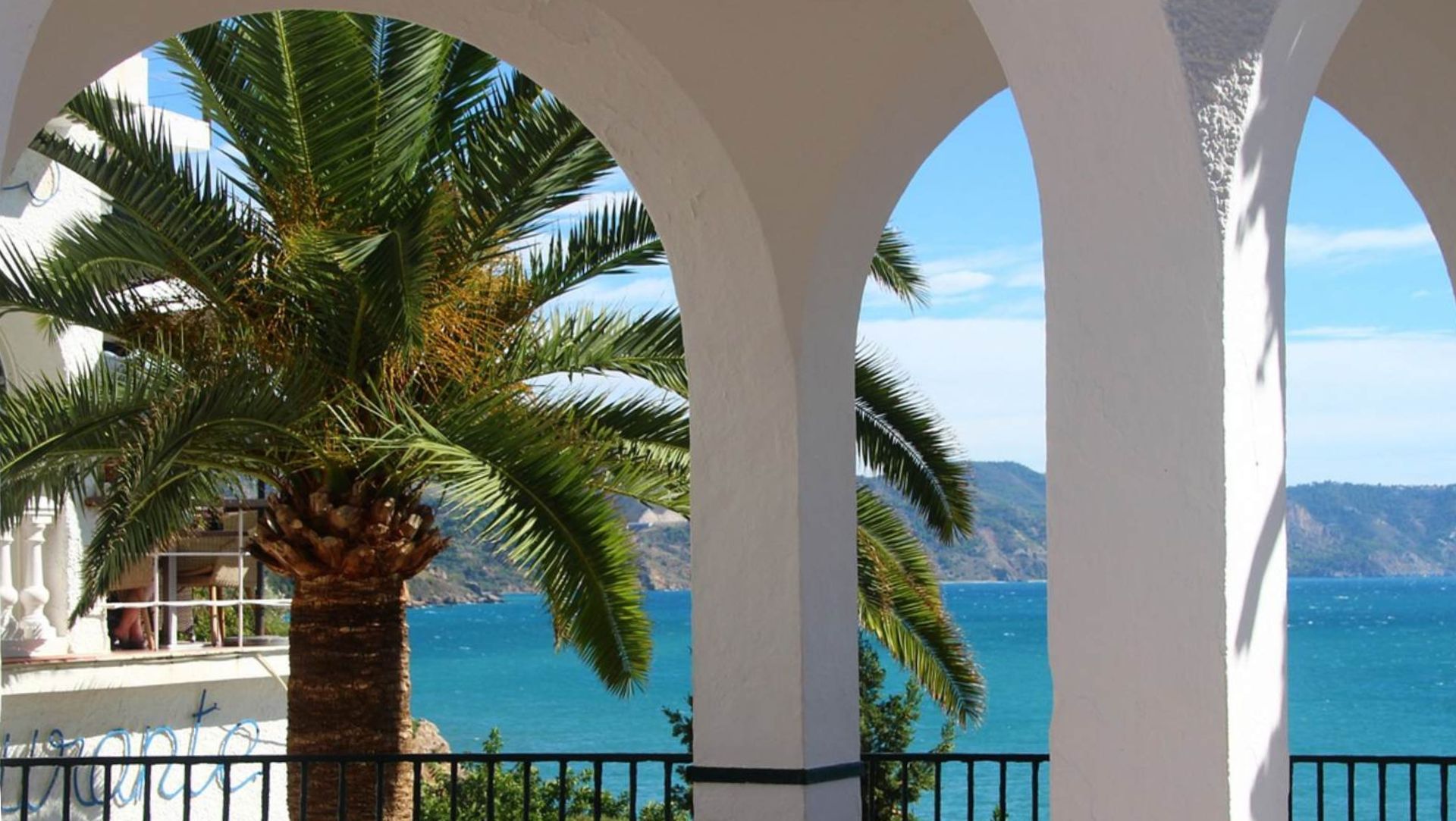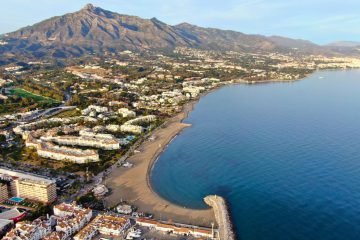If you’re searching for the best places to buy in Spain, you’re in good company. Spain’s property market blends natural beauty, rich cultural heritage, sunny weather, and modern infrastructure with strong tourism and a steady stream of international buyers. Whether you want city living, Spain’s coastal areas with stunning beaches, or a slower pace among hidden gem towns, this guide distills the best cities and coastal towns for property investment, lifestyle, and rental income—so you can confidently buy property in Spain with data, context, and clear next steps.
Best Places to Buy in Spain at a Glance (By Goal)
- Investor focus (high ROI potential): Valencia, Malaga City, Alicante (Costa Blanca), Murcia (up and coming areas), certain neighborhoods in Madrid and Bilbao.
- Premium lifestyle and luxury real estate: Marbella and Estepona (Costa del Sol), Mallorca (Balearic Islands), San Sebastián (Basque Country), prime Barcelona.
- Balanced value and quality of life: Valencia City, Malaga City, Cadiz coast (Conil/Tarifa), Northern Spain’s Asturias and Cantabria.
- Beach life and holiday homes: Costa del Sol, Costa Blanca, Costa Brava, Balearic Islands.
- Cheapest place shortlist to start research: parts of Murcia, Almeria, inland Valencia/Castellón, secondary towns in Galicia and Extremadura.
How to Choose Where to Buy Property in Spain

Clarify your primary goal before you buy property. If life and lifestyle lead, target a more relaxed pace, outdoor activities, sea views, and modern amenities near excellent beaches. For rental properties and high rental yields, focus on strong rental market fundamentals—tourism demand, universities, corporate hubs, and excellent transport links that make access easy year-round. If pure real estate investment drives your decision, compare price-per-m², occupancy rates, and local licensing rules that impact rental income.
Budget matters as property prices vary widely between mainland Spain and the Balearic Islands, and even street-to-street within major cities. Affordable apartments abound in Costa Blanca and Murcia, while luxury real estate in Marbella, Ibiza, and select Barcelona and Madrid districts commands a premium. Always stress-test interest rates, mortgage terms, and total cost of ownership, and compare licensing differences by autonomous community to avoid surprises when renting short-term.
Think access and infrastructure. Spain’s modern infrastructure—AVE high-speed rail, a dense motorway network, and international airports—gives most buyers easy access to their homes. Digital nomads and expats value fiber internet, healthcare, coworking, and international schools around hubs like Marbella, Malaga, Valencia, Madrid, and Palma. Climate also shapes fit: the Mediterranean climate delivers warm climate and sunny weather along Spain’s coastal areas, while Northern Spain offers cooler summers, rugged cliffs, and lush landscapes near the French border.
Best Coastal Areas to Buy Property in Spain
Costa del Sol (Malaga, Marbella, Estepona)

Costa del Sol is a popular destination for investors and lifestyle buyers alike thanks to stunning beaches, a warm climate, world-class golf courses, and excellent transport links via Malaga Airport. Malaga City has become a tech and culture magnet with museums, start-up activity, and year-round demand for long term rentals, while Estepona and Benahavís offer new properties and modern amenities in a calmer setting. Marbella remains the flagship for luxury real estate, prime location, international schools, and premium holiday homes, delivering strong seasonal rental income and liquid property sales across market cycles.
- Who it suits: investors chasing high rental yields in peak season, luxury buyers, families needing international schools, expats seeking a laid back lifestyle near the Mediterranean Sea.
- Watch-outs: short-stay rules vary by municipality; verify license eligibility before buying. Premium zones have higher property prices and competition.
Niche Estates insight (Marbella): Our clients securing sea views near the Golden Mile or Nueva Andalucía see robust booking calendars and price resilience. For value, consider micro-areas like San Pedro de Alcántara (walkable, family-friendly) or east Marbella (Elviria/Cabopino) with excellent beaches.
Costa Blanca (Alicante, Torrevieja, Altea)

Costa Blanca blends sandy beaches, affordable apartments, and easy access for international buyers via Alicante and Valencia airports. The area has a broad expat base, strong tourism, and a mix of coastal towns like Altea (charming, upscale) and Torrevieja (value), plus up and coming areas such as Orihuela Costa, Villajoyosa, and Guardamar. For property investment, two-bed apartments within walking distance to the beach or tram lines typically capture a strong rental market for both holiday homes and monthly stays.
- Why buy: high ROI potential at modest price points, modern infrastructure, healthcare access, and diverse inventory including new properties.
- Watch-outs: seasonality can be pronounced in pure tourism pockets; prioritize walkability and transit to stabilize occupancy.
Costa Brava & Barcelona Province

Costa Brava is beloved for natural beauty, rugged cliffs, coves, and historic architecture. Lifestyle buyers target Begur, Calella de Palafrugell, and Tossa de Mar, while Sitges (near Barcelona) offers a sophisticated resort vibe with excellent transport to the city. Investors should note Barcelona’s strict short-let licensing; many pivot to long term rentals or buy in nearby coastal towns with more flexible rules.
- Why buy: rich history, cuisine, design; proximity to the French border; strong second-home demand.
- Watch-outs: supply constraints in prime villages; careful due diligence on tourist permits.
Cadiz Coast & Tarifa

From Cadiz city’s old-town charisma to Tarifa’s wind-sport magnetism, this coastline is a hidden gem with a slower pace and bohemian flair. Expect strong summer rental income, authentic food culture, and unspoiled beaches. Character properties in Vejer de la Frontera and Conil de la Frontera draw boutique tourism, while Tarifa appeals to outdoor activities enthusiasts.
Murcia & Costa Cálida

Murcia offers attractive entry prices, golf communities, and new-build developments with amenities that appeal to both lifestyle buyers and investors. As an up and coming area with improving transport, it’s an attractive option for those seeking high rental yields potential on a budget.
Best Islands to Buy Property in Spain
Balearic Islands (Mallorca, Ibiza, Menorca)

Mallorca balances city living in Palma with luxury estates in the southwest and serene fincas inland. Ibiza commands premium property prices and nightly rates but enforces strict holiday rental licensing. Menorca is the calmest island, appealing to families and retirees seeking a more relaxed pace and long term rentals.
- Why buy: prime location in the Mediterranean Sea, steady stream of high-spend tourism, top-tier marinas and dining, strong brand appeal.
- Watch-outs: limited supply, higher acquisition taxes for some brackets, and licensing caps by island.
Canary Islands (bonus for winter sun)
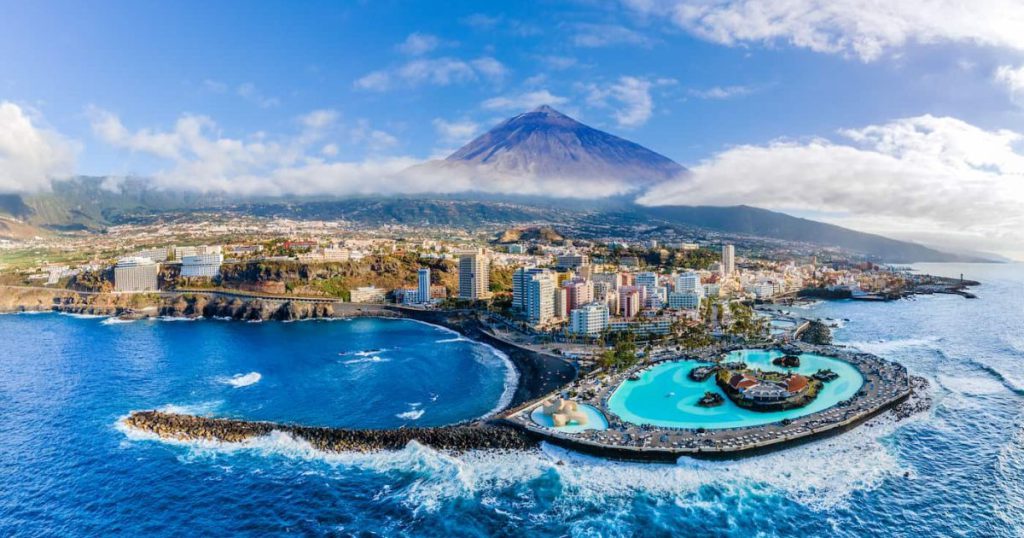
Tenerife, Gran Canaria, and Lanzarote offer warm weather year-round, diversified tourism, and strong winter occupancy. Relative affordability versus the Balearics and easy access from major European cities make them compelling for seasonal rental income.
Best Cities to Buy Property in Spain (Year-Round Rent)
Madrid

Spain’s capital is an economic engine with modern infrastructure, excellent transport links, museums, and corporate demand. Year-round occupancy supports long term rentals, while appreciation trends have been steady in central districts. Investors split strategies between core (Salamanca, Chamberí) and value (Tetuán, Arganzuela).
- Suitability: international buyers wanting stability, city life, and liquidity; corporate landlord strategies.
- Note: higher entry prices; focus on proximity to Metro hubs and business districts.
Barcelona

Barcelona merges beach and city with rich cultural heritage and iconic architecture. Licensing for tourist rentals is tight, so many buyers choose long term rentals in Eixample, Gràcia, Sants, or innovation corridors like Poblenou. Demand from digital nomads remains healthy thanks to coworking, fiber internet, and lifestyle perks.
- Tip: Verify building bylaws and autonomous community rules before assuming short-let viability.
Valencia

Valencia is a standout for value: affordable apartments, rising food and tech scenes, and strong student and expat demand. Neighborhoods like Ruzafa and El Carmen offer vibrant city living, while beach zones (Malvarrosa, Patacona) mix holiday homes and monthly stays. Excellent transport links, modern amenities, and culture make it a balanced investment-lifestyle pick.
Malaga City

Malaga combines museums, a walkable historic center, beaches, and a growing tech park that anchors jobs. It’s a favorite for investors targeting both weekend tourism and medium-term rentals, with lower volatility than purely seasonal resorts.
Bilbao & San Sebastián (Basque Country)
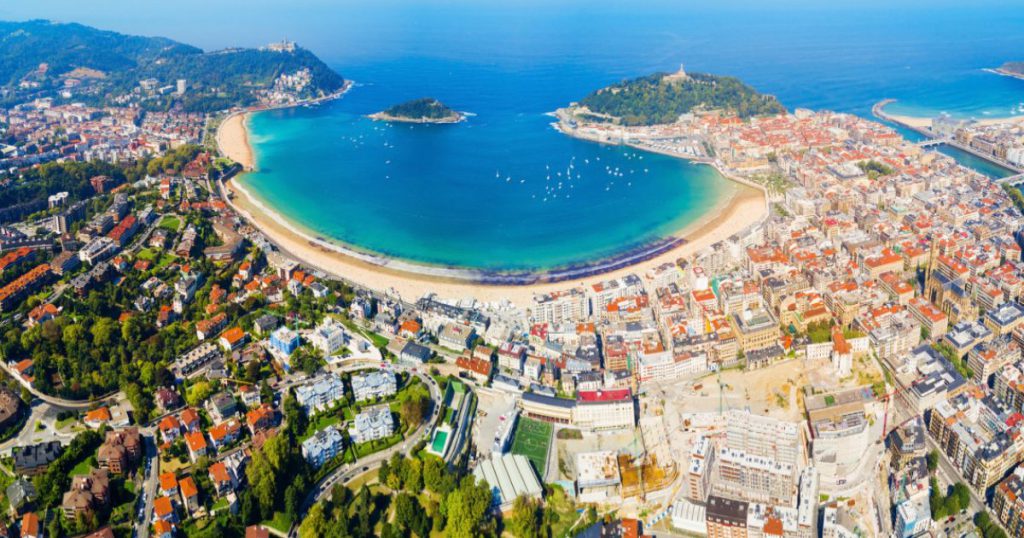
Bilbao’s regeneration and Guggenheim-fueled brand lifted its property market, offering solid fundamentals, universities, and industry. San Sebastián (Donostia) is premium, with excellent beaches, Michelin-starred dining, and limited supply. The region’s natural beauty and cooler summers attract affluent buyers.
Comparing Spain’s Coastal Areas vs Cities vs Inland
- Coastal towns
- Pros: sea views, outdoor activities, tourism-driven rental income, laid back lifestyle.
- Cons: seasonality, stricter tourist licensing in some municipalities, reliance on flights.
- Major cities
- Pros: year-round rent, diversified demand, excellent transport, resilient capital values.
- Cons: higher prices, tighter rental regulations, competition for best stock.
- Inland and smaller cities
- Pros: cheapest place opportunities, relaxed pace, rich history, lower holding costs.
- Cons: shallower rental markets, longer absorption on resale, car-dependency in some areas.
What You Can Buy: Property Types

- Affordable apartments: Best entry point for investors and first-time buyers; easy to rent, simple upkeep, strong yield math near transit and amenities.
- New properties vs resales: New builds bring energy efficiency, warranties, and modern amenities; resales offer central addresses, character, and established communities.
- Luxury real estate: Flagship villas and penthouses in Marbella, Ibiza, Mallorca, and Barcelona prime; expect global demand and resilient values.
- Townhouses and historic homes: Rich history and historic architecture; ensure structural surveys and understand renovation permits.
- Rural fincas and country homes: More land and privacy; verify utilities, road access, and legal status before committing.
Quick Comparison Table: Prices, Yields, and Licensing Notes
| Area (Region) | Typical Price/m² (€) | Gross LT Yield | ST Licensing Outlook | Why It Works |
|---|---|---|---|---|
| Marbella (Costa del Sol) | 4,500–8,500+ | 3–4.5% | Allowed; check building/zone | Luxury demand, sea views, intl. schools |
| Malaga City (Costa del Sol) | 3,000–5,000 | 4–5.5% | Regulated; viable in many areas | Year-round tourism + tech jobs |
| Valencia City | 2,200–3,800 | 4.5–6% | Regulated; medium-term strong | Affordable, culture, students, beach access |
| Alicante (Costa Blanca) | 1,800–3,200 | 5–6.5% | Generally accessible; check town | Value, sandy beaches, easy access |
| Madrid | 4,000–7,500 | 3–4.5% | Long-term focus | Liquidity, corporate demand, transport |
| Barcelona | 4,500–8,000 | 3–4.5% | Strict short-let limits | Global city, beach + culture |
| Mallorca (Balearics) | 4,500–9,000+ | 3–4.5% | Caps by island/municipality | Prime brand, luxury second homes |
| Murcia (Costa Cálida) | 1,300–2,200 | 5–7% | Generally accessible; verify | Up and coming, new builds, golf communities |
| San Sebastián (Basque) | 5,500–9,000+ | 3–4% | Tighter in core zones | Premium coastal lifestyle, limited supply |
| Cadiz/Tarifa Coast | 2,500–4,200 | 4–6% (seasonal) | Seasonal, varies by town | Hidden gem vibe, outdoor/surf tourism |
Note: Ranges are indicative for 2024–2025 market conditions; verify micro-area comps before offers. “LT” = long term rentals; “ST” = short-term/holiday.
The Numbers: Property Market Snapshot, Yields, and ROI

Spain’s property market entered 2025 with solid fundamentals: tourism remains a key driver of rental demand, while moderating interest rates after 2023–2024 highs are improving mortgage affordability. Property sales are resilient in prime coastal and city cores, with value pockets in Murcia, Valencia, and Costa Blanca attracting investors and expats. For yields, cities with universities and diversified economies (Valencia, Malaga) balance seasonality, while resort markets with excellent beaches and golf courses (Costa del Sol, Costa Blanca) thrive on peak-season rental income.
How to model ROI:
- Sum total acquisition costs: purchase price + 10–13% purchase costs for resales (ITP transfer tax by autonomous community, notary, registry, lawyer) or 12–15% for new-build (IVA + AJD).
- Estimate gross rental income by season and tenancy type (long term rentals vs holiday homes), then subtract management, utilities, IBI property tax, community fees, insurance, maintenance, and income tax.
- Stress test occupancy and interest rates to ensure resilience.
- Target net yields that match your risk profile; lifestyle buyers may accept lower yield for location and life quality.
Taxes and Costs for Property Purchases in Spain
- Upfront costs
- Resale: ITP (typically 6–10%, varies by autonomous community), notary, registry, lawyer, survey.
- New build: IVA (generally 10% for residential) + AJD (1–1.5% typical), plus notary/registry/lawyer.
- Ongoing costs
- IBI (annual municipal tax), community fees (if in a complex), insurance, utilities, Basura (waste fee).
- Non-resident taxes: annual imputed income tax if not rented; tax on rental income if rented (apply allowable deductions).
- Licensing
- Tourist rental licensing differs by region; Barcelona and Balearic Islands are strict; parts of Costa del Sol and Costa Blanca remain accessible but require compliance.
Always verify property taxes and licensing rules where you buy; they can materially impact rental returns.
Case Study: Two Viable Paths (Investor vs Lifestyle)

“Buyers shouldn’t chase the absolute highest yield; they should seek the best risk-adjusted return in an area they’re happy to hold long-term.” — Niche Estates advisory
- Investor case (Malaga City, Centro)
- Purchase: 2-bed apartment, €380,000; costs ~11% → €421,800 all-in.
- Rent strategy: 60% medium-term (3–6 months), 40% short holiday seasons.
- Gross revenue: ~€32,000; expenses (HOA, utilities, mgmt, maintenance, insurance, IBI, marketing): ~€10,500; net pre-tax: ~€21,500 → net yield ~5.1%.
- Notes: Year-round demand from tourism and tech workers; strong transit and walkability.
- Lifestyle case (Marbella East, beachside)
- Purchase: 2-bed with sea views, €650,000; costs ~11% → €721,500 all-in.
- Use: Owner uses 8 weeks/year; holiday let remainder.
- Gross revenue: ~€38,000; expenses: ~€14,000; net pre-tax: ~€24,000 → net yield ~3.3% while enjoying prime location access and life quality.
- Notes: Premium pricing but liquid resale; international schools nearby; excellent beaches and amenities.
The Buying Process for International Buyers
- Step-by-step
- Define budget and get mortgage pre-approval (variable rates often track Euribor; consider fixed options if interest rates rise).
- Shortlist areas and visit in both high and low season.
- Hire an independent lawyer; obtain NIE; open a Spanish bank account.
- Make an offer; sign a reservation and place a small deposit.
- Due diligence: title, charges, community bylaws, planning, structural checks.
- Sign arras (earnest money) with timelines and penalties outlined.
- Complete at the notary; register the title; set up utilities and property management.
- Renting out
- Choose between long term rentals (stable, fewer rules) and holiday homes (potentially higher returns, more regulation).
- Keep meticulous records and file taxes correctly on rental income; use reputable managers for compliance and service.
Is Marbella the Best Place to Buy in Spain?

Marbella is often the benchmark for luxury real estate on the Costa del. It combines excellent beaches, sea views, international schools, golf courses, modern amenities, and a global brand that supports property prices across cycles. For many buyers, it is the best place, Marbella delivering both lifestyle and investment benefits, especially in prime micro-areas with walkability and beach access. The trade-off is higher entry prices and strong competition for standout listings, so swift, informed decisions matter.
Great alternatives include Malaga City for city living and yields, Estepona for quieter luxury and new-build options, Valencia for urban value and culture, and Mallorca for island prestige and blue-chip second homes.
Buyer Profiles: Match Places to Your Plan

- Yield-focused investors: Valencia (students + expats), Malaga (tech + tourism), Alicante (value near beaches), Murcia (golf/new builds).
- Families/long-term expats: Marbella (schools + community), Mallorca (Palma + southwest), Madrid (international hubs), Valencia (parks + beaches).
- Digital nomads: Malaga, Valencia, Madrid, Barcelona—fiber, coworking, culture.
- Retirees seeking a relaxed pace: Costa del Sol, Costa Blanca, Menorca, Cadiz Coast—laid back lifestyle with healthcare access.
- Luxury buyers: Marbella, Ibiza, Mallorca prime, Barcelona prime, San Sebastián.
Risks and Mistakes to Avoid
- Ignoring licensing and bylaws: Short-let rules and community statutes can restrict rentals or renovations—verify before you buy.
- Underestimating total cost of ownership: Budget for community fees, maintenance (pools/gardens), insurance, and periodic refurbishments to protect yield.
- Not stress-testing: Model different interest rates, occupancy levels, and seasonality; keep a reserve fund for void periods.
- Skipping independent legal counsel: Engage a buyer-focused lawyer to handle due diligence, especially in older buildings or rural properties.
Checklist: Fast Comparison and Viewings

- Area comparison
- Price-per-m², yield (LT and ST), licensing, transport, hospitals, schools, grocery, gyms, fiber internet, noise, safety.
- Viewing
- Orientation and light; noise and neighbors; damp and plumbing; building condition; energy rating; parking and storage; HOA rules; distance to beach or Metro/tram.
FAQs: Best Places to Buy in Spain, Taxes, and More
- Where are the cheapest places to buy property in Spain?
- Parts of Murcia, Almeria, inland Valencia/Castellón, and secondary towns in Galicia and Extremadura often present the lowest entry points while still offering modern infrastructure nearby.
- Which cities offer the best rental yields for long term rentals?
- Valencia and Malaga often top investor lists, with specific neighborhoods in Madrid and Bilbao offering stable, if slightly lower, yields.
- Costa del Sol vs Costa Blanca: which is better for investors?
- Costa del Sol has stronger luxury demand and brand power (higher prices); Costa Blanca offers affordable apartments and potentially higher percentage yields at lower budgets.
- What are the key property taxes for international buyers?
- ITP for resales or IVA + AJD for new builds, plus ongoing IBI, waste fees, non-resident income tax, and income tax on rents. Rates vary by autonomous community.
- Can I rent my property as a holiday home anywhere?
- No—rules differ by region and municipality. The Balearic Islands and Barcelona are strict, while many Costa del Sol and Costa Blanca towns are accessible with proper licensing.
- How do interest rates affect Spanish mortgages in 2025?
- With Euribor off 2023 peaks, affordability is improving; compare fixed vs variable and ensure stress tests for future rate changes.
- Is Northern Spain good for investment or lifestyle?
- Both. The Basque Country, Asturias, and Cantabria offer natural beauty, excellent beaches, and food culture; yields can be lower in premium coastal enclaves but lifestyle is exceptional.
- What are typical buying costs as a percentage of price?
- Plan for 10–13% on resales and 12–15% on new builds, depending on the region and property price.
- Do I need an NIE and Spanish bank account?
- Yes, you’ll need an NIE to buy property in Spain, and a local bank account simplifies taxes, utilities, and mortgage payments.
- Are up and coming areas risky?
- They can offer high ROI potential but require careful due diligence on demand drivers, transport, and future development plans.
Conclusion: Where to Buy Property in Spain in 2025
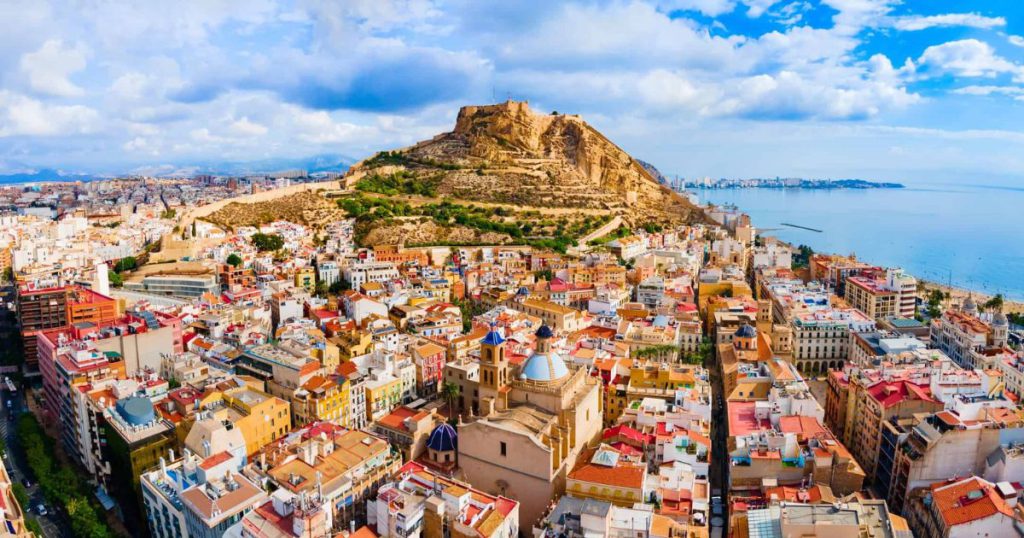
The best places to buy in Spain depend on your goal. For high rental yields and balanced value, Valencia, Malaga City, and Alicante on the Costa Blanca stand out. For luxury real estate and a prime location, Marbella on the Costa del Sol leads, with Estepona and Mallorca as premium alternatives. Northern Spain’s Basque Country and Cantabrian coast prize natural beauty and a slower pace, while Murcia and Almeria offer up and coming areas and attractive entry prices. Whichever path you choose, anchor your decision in solid property prices research, licensing rules, and ROI modeling so your property investment aligns with your life, rent strategy, and long-term plan.
Looking for tailored advice or on-the-ground viewings in Marbella and the Costa del Sol? Niche Estates specializes in sourcing, due diligence, and management for international buyers and investors. Reach out for a custom shortlist that fits your budget, yield targets, and lifestyle.


